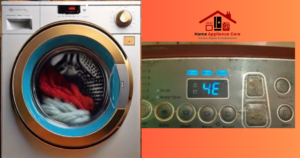In 1956, approximately 80% of Indian households owned a refrigerator. Today, nearly all households in the India possess this essential appliance. This widespread ownership is unsurprising considering the refrigerator’s pivotal role in keeping food and beverages cool and fresh.
Annually, over 8 million refrigerators find homes in the India with approximately a quarter of households opting for two units. With proper care, these appliances boast a lifespan of up to 13 years. Dimensions vary, ranging from 24 to 40 inches in width, 62 to 72 inches in height, and 29 to 36 inches in depth.
The wattage of an average refrigerator typically falls within the range of 100 to 2000 watts, varying based on the fridge type and age. For instance, a freezer top refrigerator, the most common type, typically consumes around 500 kWh annually, costing approximately ₹4,750 per year. Conversely, an older and larger fridge consuming 2000 kWh annually may incur a cost of around ₹19,000 yearly.
While primarily utilized for keeping food and beverages cool, refrigerators serve additional purposes. For example, they can extend the lifespan of camera film and preserve the freshness of freshly bought flowers, ideal for gifting. Other innovative uses for refrigerators include:
Chilling Hot Dishes:
Utilize your refrigerator to cool down hot food efficiently. Simply divide large portions of your dish into smaller servings and transfer them into shallow containers, promoting faster cooling. It’s crucial to ensure that your food is promptly placed in the refrigerator, maintaining a temperature of 40°F (4°C) or below, within two hours of cooking. Extended exposure to room temperature creates an environment conducive to harmful bacteria growth. If your kitchen temperature exceeds 90°F (32°C), expedite the refrigeration process within an hour.
Chilled Pillowcases:
Maximize your refrigerator’s utility by using it to cool your pillowcases. Elevated evening temperatures can disrupt your body’s natural cooling process, hindering a restful night’s sleep. A cool pillowcase can aid in lowering your body temperature, promoting better sleep quality. Simply encase your pillowcase in a ziplock bag and refrigerate it throughout the day. Retrieve it before bedtime, ensuring a refreshing and comfortable night’s rest.
Refrigerated Sun Care Essentials:
Harness the cooling power of your refrigerator to maintain the efficacy of your sun care products. Particularly beneficial during warmer months or in hot climates, refrigerating items such as sunscreen, aloe vera, sun gels, zinc, and sprays prevents them from becoming overly runny. Moreover, applying these chilled products directly from the fridge offers a refreshing sensation, enhancing your skincare routine during sun-drenched days.
Guaranteed Firm Whipped Cream:
Utilize your refrigerator to consistently achieve stiff whipped cream. While whipping cream at high speed is essential, chilling the mixing bowl, beaters, or whisk in the fridge beforehand accelerates the process of achieving stiff peaks. Simply refrigerate your mixing bowl, beaters, or whisk for 15 minutes or longer before commencing the whipping process for optimal results.
Preserve Film Longevity:
Utilize your refrigerator to prolong the lifespan of your camera film. If you plan to use the film within the next six months, store it in the fridge at a temperature of 46°F (8°C) or below. This practice effectively slows down the degradation process, potentially doubling the film’s expiration date and ensuring optimal performance when capturing your memorable moments.
Enhance Nail Polish Longevity:
Utilize your refrigerator to prolong the lifespan of your nail polish. Storing nail polish in the fridge slows down solvent evaporation and prevents the discoloration that commonly occurs with aging polish. When preparing to use your nail polish, remove it from the fridge and allow it to reach room temperature by leaving it out for approximately 30 minutes. This ensures smooth application and a flawless finish when you apply the polish evenly.
Prevent Separation of Natural Peanut Butter:
Utilize your refrigerator to maintain the consistency of natural or homemade peanut butter and prevent its ingredients from separating. Natural peanut butter, devoid of additives, tends to separate with the oil rising to the top. To preserve its integrity, refrigerate it if you won’t consume it within a month. This not only keeps the peanut butter homogeneous but also prevents the oil in peanuts from becoming rancid, ensuring its freshness for longer periods.
Preserve Glue and Paint Integrity:
Utilize your refrigerator to safeguard the texture and quality of glue and paint. Simply place your paint or glue in a ziplock bag to prevent contamination, then store them in the fridge until needed. The low humidity environment of the refrigerator helps prevent these materials from drying out prematurely, ensuring they remain in optimal condition for future use.
Facilitate Plastic Wrap Usage:
Enhance the usability of plastic wrap in your kitchen by utilizing the refrigerator. Although unrolling plastic wrap isn’t overly challenging, this simple trick can streamline the process further. Storing the roll of plastic wrap in the fridge reduces static electricity and alters the molecular structure of the wrap. When it’s time to wrap up leftovers, simply retrieve the chilled roll from the fridge. You’ll find that it unrolls with ease and is more manageable to use, making food storage a breeze.
Preserve Freshness of Cut Flowers:
Utilize your refrigerator to prevent freshly cut flowers from wilting prematurely. Unlike warmer environments, the cool temperature of the fridge significantly reduces the likelihood of wilting, which is why florists often display flowers in refrigerated cases. Prior to displaying or gifting flowers, place them in the refrigerator one or two days in advance to maintain their freshness. This simple step ensures that your floral arrangements remain vibrant and beautiful for longer periods.
Preserve Seeds’ Viability:
Utilize your refrigerator as a storage solution for seeds, ensuring their long-term viability. Seeds thrive in environments with low temperatures and moisture levels, making refrigerators an ideal option. The typical temperature range inside a refrigerator, between 32°F (0°C) to 41°F (5°C), aligns perfectly with the optimal conditions for seed preservation. Before transferring seeds into an airtight container for refrigeration, ensure they are completely dry. For added protection against moisture, consider placing a silica gel packet inside the container alongside the seeds. This simple precaution helps safeguard the seeds and maintain their quality over time.
Preserve Cosmetics and Beauty Products:
Harness the power of your refrigerator to store cosmetics and various beauty products effectively. For instance, chilling your eye cream in the fridge before application can effectively reduce redness and puffiness around the eyes. Similarly, refrigerating your eyeliner for at least 15 minutes aids in achieving precise and defined winged eyeliner application.
Additionally, refrigerating lipstick can extend its lifespan by preventing the breakdown of chemicals and maintaining its shade. The cool temperature ensures the lipstick remains intact, allowing you to enjoy its quality for longer periods.






